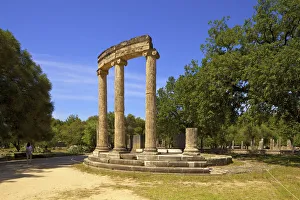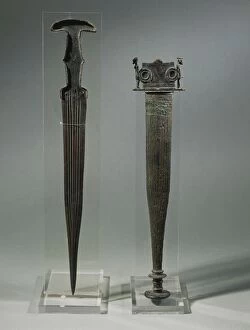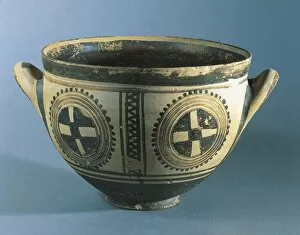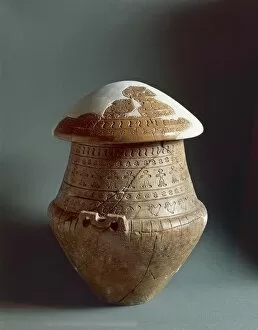Eighth Century Bc Collection
The eighth century BC was a time of remarkable cultural and artistic achievements across various regions of the world
All Professionally Made to Order for Quick Shipping
The eighth century BC was a time of remarkable cultural and artistic achievements across various regions of the world. In Olympia, Arcadia, located in the Peloponnese region of Greece, stood the magnificent Philippeion. This grand structure served as a memorial to Philip II of Macedon and showcased the architectural prowess of Southern Europe. Meanwhile, in Ma rib governorate, Yemen, the Dam of Ma rib stood as a testament to ancient engineering marvels. Built during this era, it demonstrated the advanced irrigation systems that were developed by civilizations in this part of the world. In China's Western Zhou Dynasty during the 11th-8th century BC, an exquisite ritual mask depicting Taotie was crafted. This intricate piece showcased China's rich artistic heritage and its deep-rooted connection with symbolism and spirituality. Moving westwards to Pleven Region in Bulgaria, goldsmith art flourished during this period. The treasure of Valcitran contained an impressive Umbo (shield boss), showcasing masterful craftsmanship and attention to detail. Jewelry also played a significant role in expressing cultural identity during this time. An anchor-shaped pendant made from bronze discovered in Axioupolis exemplified Greek civilization's love for adornment and their skillful metalworking techniques. In Vulci province within Viterbo Italy resided a unique Bronze funerary urn shaped like a house dating back to the 8th century BC. This extraordinary artifact reflected not only burial customs but also provided insights into ancient Italian society. Beyond material artifacts, influential figures emerged during this era as well. Isaiah, an 8th-century BC Jewish prophet left an indelible mark on religious history through his teachings and prophecies which continue to inspire people today. Sardinia too contributed its own artistic legacy with a bronze figure depicting a warrior from its region - showcasing their martial traditions and skilled craftsmanship. Lastly but no less fascinating is another bronze vase found in Campi Bisenzio, province of Florence.



















